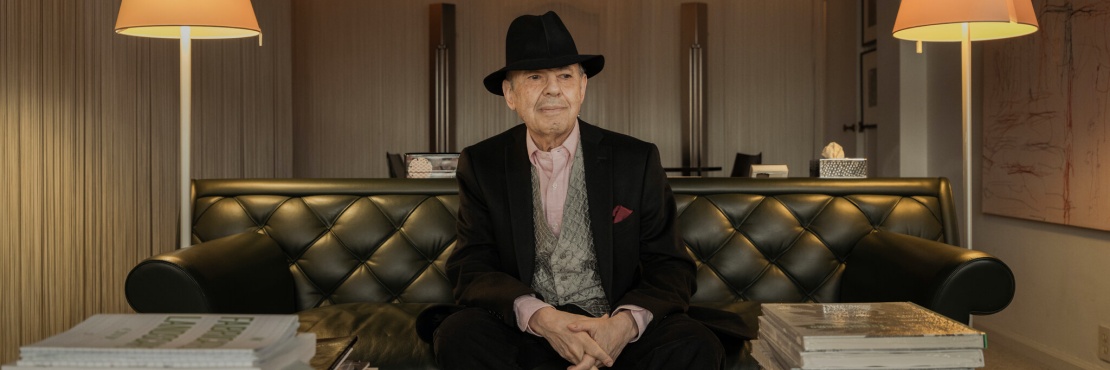“The architect Emilio Ambasz at his apartment in New York.” Image: Sasha Maslow for The New York Times
Green Architecture pioneer and architect (among other professionals) Emilio Ambasz is currently featured in The New York Times:
An Architect Known for Building Castles in the ‘Vegetable Kingdom’
Matt Shaw writes,
“Mr. Ambasz was one of the leaders of the environmental movement in the 1960s. For him, “green” means more than LEED-certified, net-zero or energy-efficient structures, but rather buildings that indisputably belong to the landscape.” ~ New York Times, May 3, 2023
Publisher’s Note: See the entire NYT article at Ferdinando Crespi Ufficio Stampa website.
For a building to belong “to the landscape,” I believe that means it to be “of the landscape.”
Yet in purest terms, something built or placed on top of a landscape doesn’t really belong there; many architects – including Emilio Ambasz – have spoken about the best architecture as being none at all – nothing to impose itself upon nature.
Well, Emilio’s designs flirt with belonging to the landscape via reclaiming their footprints by being re-covered in vegetation; and, over time, they also morph into becoming one with the landscape.
Like his persona, many of Emilio’s built projects defy categorization. First, many people wonder are they actually real or is it something conceptual within the sci-fi world, say Elysium or even the last season of Westworld? Then, where’s the building? Is it earth sheltered, are those greenwalls or a green roof covered with plants?
Green Castles in the Sky
Engaging our imaginations are Emilio’s buildings that seemingly sprout from the earth.
Casa de Retiro Espiritual, 1975-2000
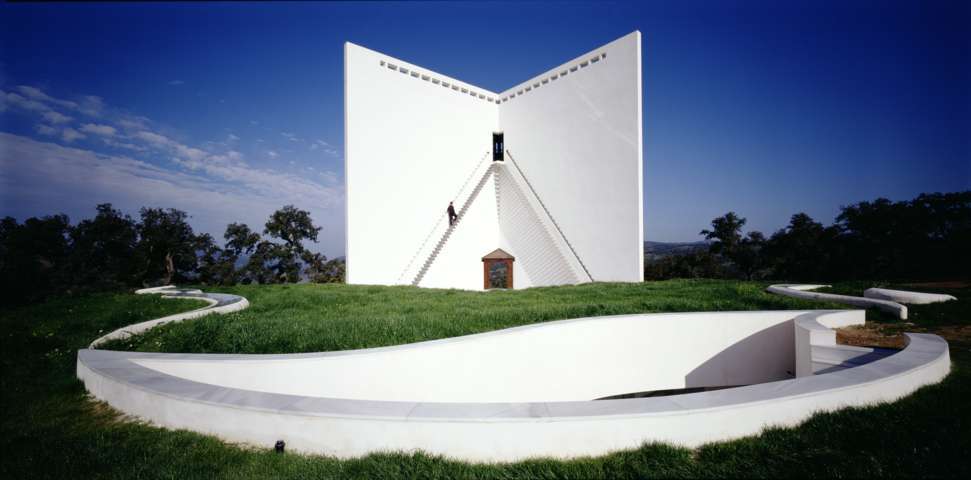
Image: Emilio Ambasz
Ambasz’s Casa de Retiro Espiritual (House of Spiritual Retreat) was designed in 1975 for a site in Cordoba, Spain and built in 2000 north of Seville. Here the Spanish abode juxtaposes the built and natural environments with its two imposing, monumental white walls rising into nothingness. Hidden from view is a single family home set within the dusty sierra Andalusian landscape overlooking peaceful groves, fields, and stunning lake reflecting the blue skies and fluffy white clouds overhead.
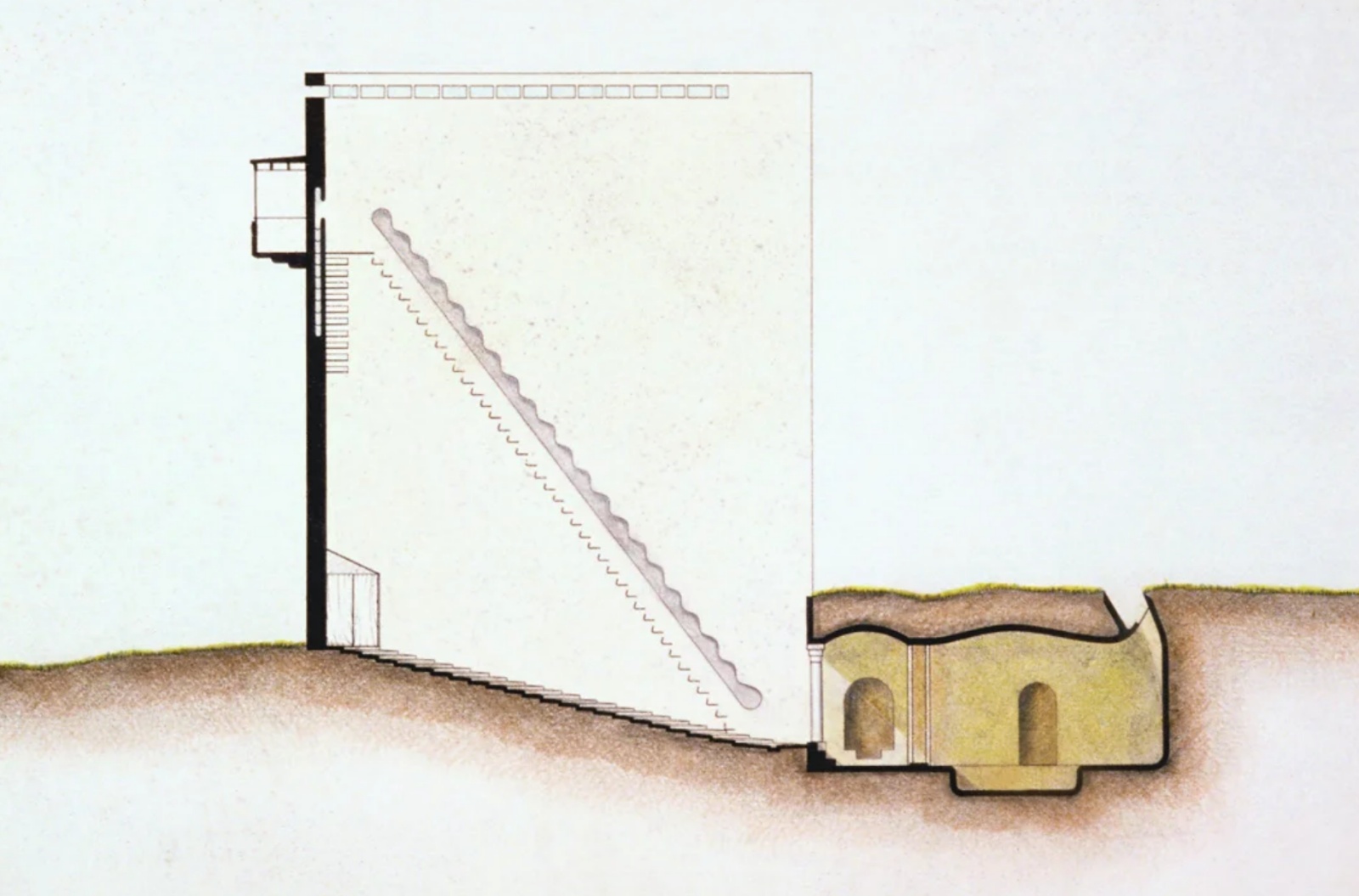
Image: Emilio Ambasz
To experience the Casa de Retiro Espiritual is to ponder the architect. Curator, critic, and columnist Vladimir Belogolovsky says it is perhaps Ambasz’s most powerful work.
“With a freestanding mask-like façade, the house tries to reexamine architecture and many of its key notions – its relation to landscape, to sky, to man. It is simultaneously here and there. It is at once inside and outside. It is the beginning and the end, firmly grounded and forever suspended in midair.” ~ Vladimir Belogolovsky, Curatorial Project
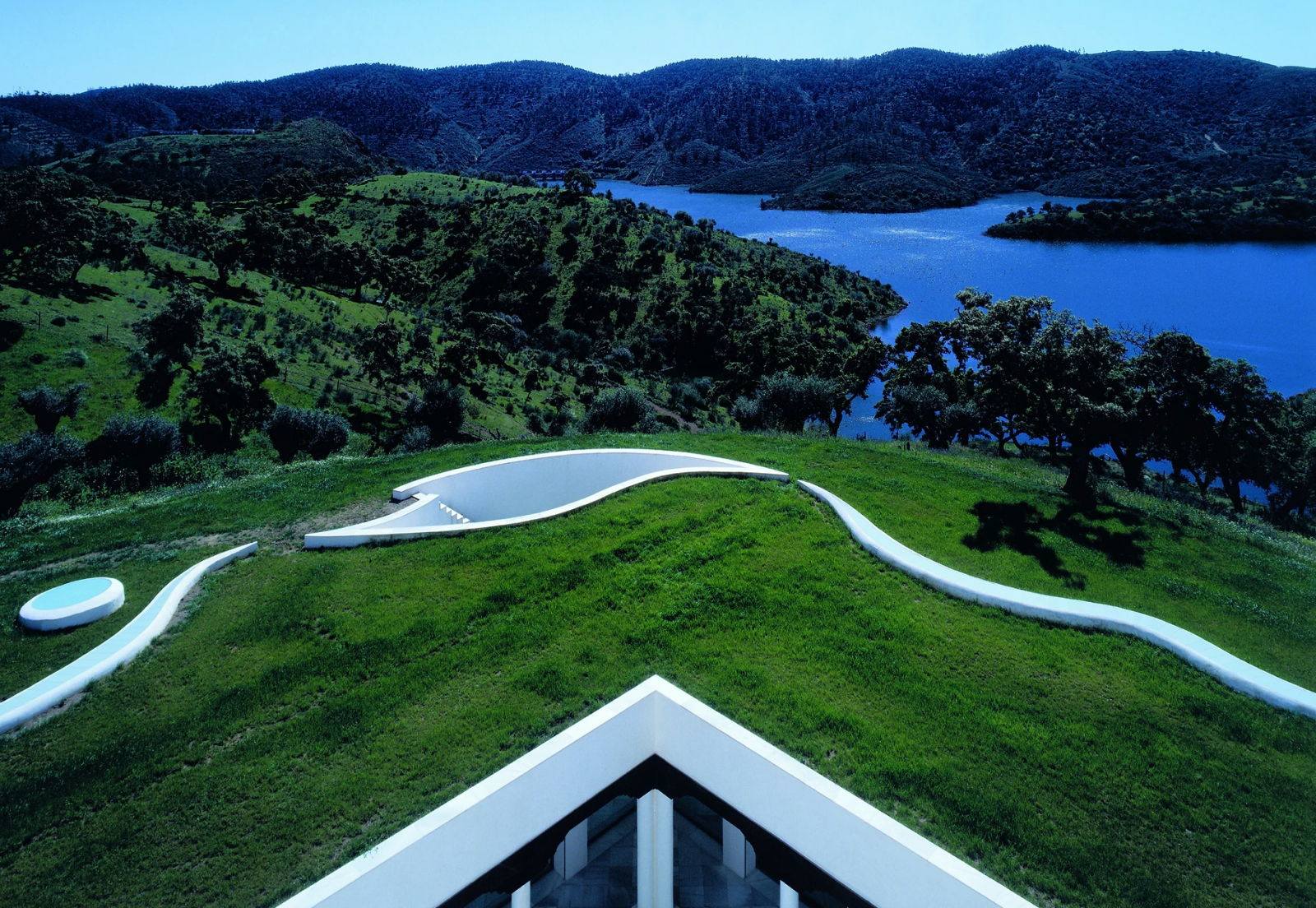
Image: Emilio Ambasz
Enigmatically, almost counter-intuitively for architecture, the important part is the underground home, otherwise completely obscured by nature. The sculptural concrete “stairway to heaven” – or nowhere – serves as a device to lead the eye up, away from the home, simply framing views of the countryside and providing an interactive folly of light and shadow with Moorish and modern design.
ACROS Fukuoka Prefectural International Hall, 1995
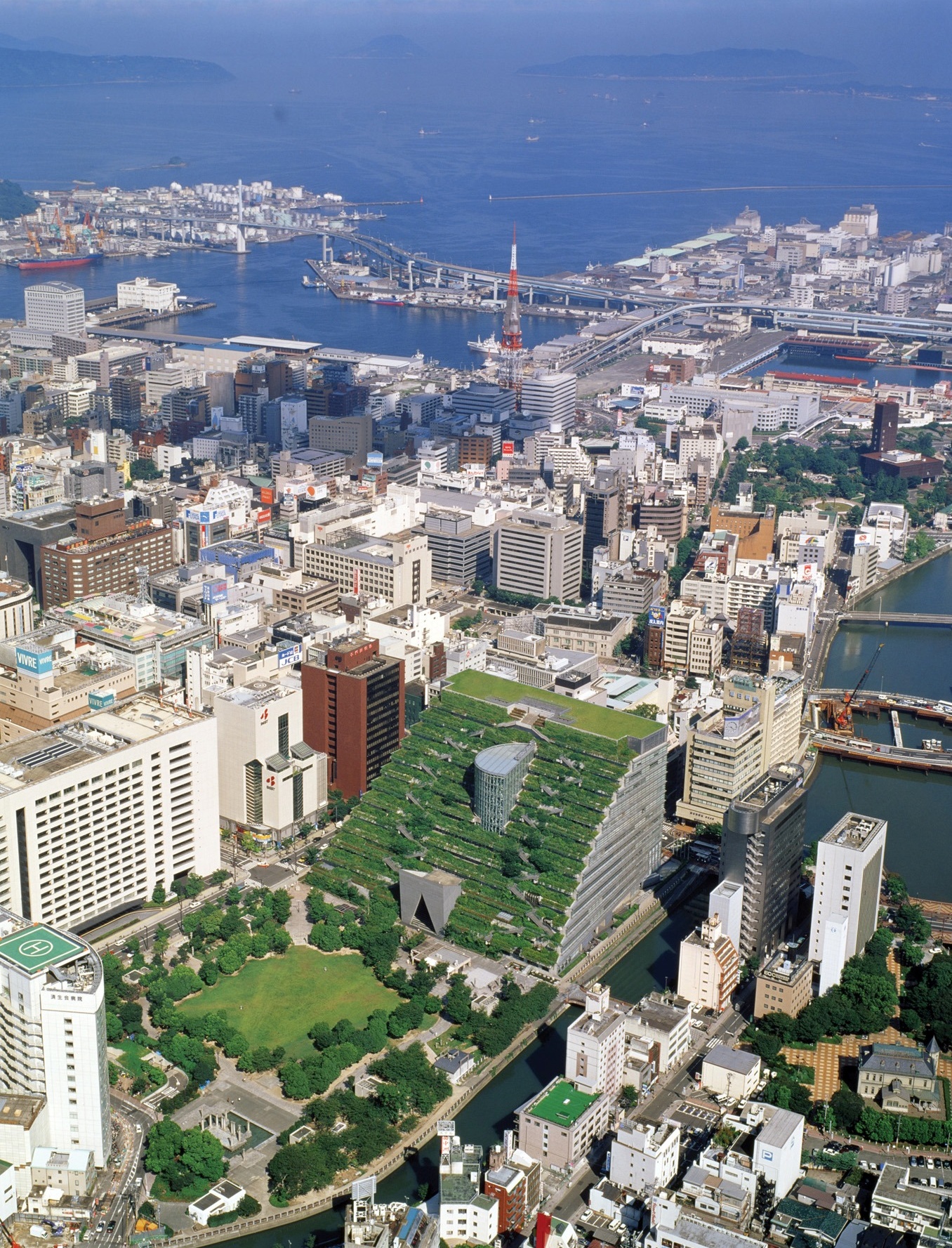
Image: Hiromi Watanabe courtesy of Emilio Ambasz
In contrast, ACROS (Asian Crossroads Over the Sea) Fukuoka Prefectural International Hall emphasizes the powerful resiliency of humans to demand and reclaim nature. In 2020, the spectacular green architecture of the “Asian Cross Roads Over the Sea” – or ACROS – celebrated its 25th anniversary. Located adjacent to Tenjin Central Park, ACROS is the only green open space in that part of Japan’s Fukuoka Prefecture.
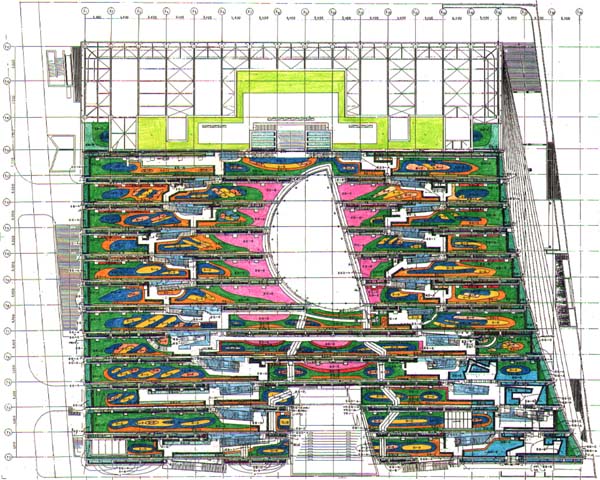
ACROS Plan. Image: Emilio Ambasz & Associates
In urban centers with a high density of population, Emilio Ambasz believes the interests of developers, the need of new buildings, and the need of open public green areas can be intertwined. With a whopping 1,000,000+ square feet covered with over 120 varieties and 50,000 plants, ACROS does just that.
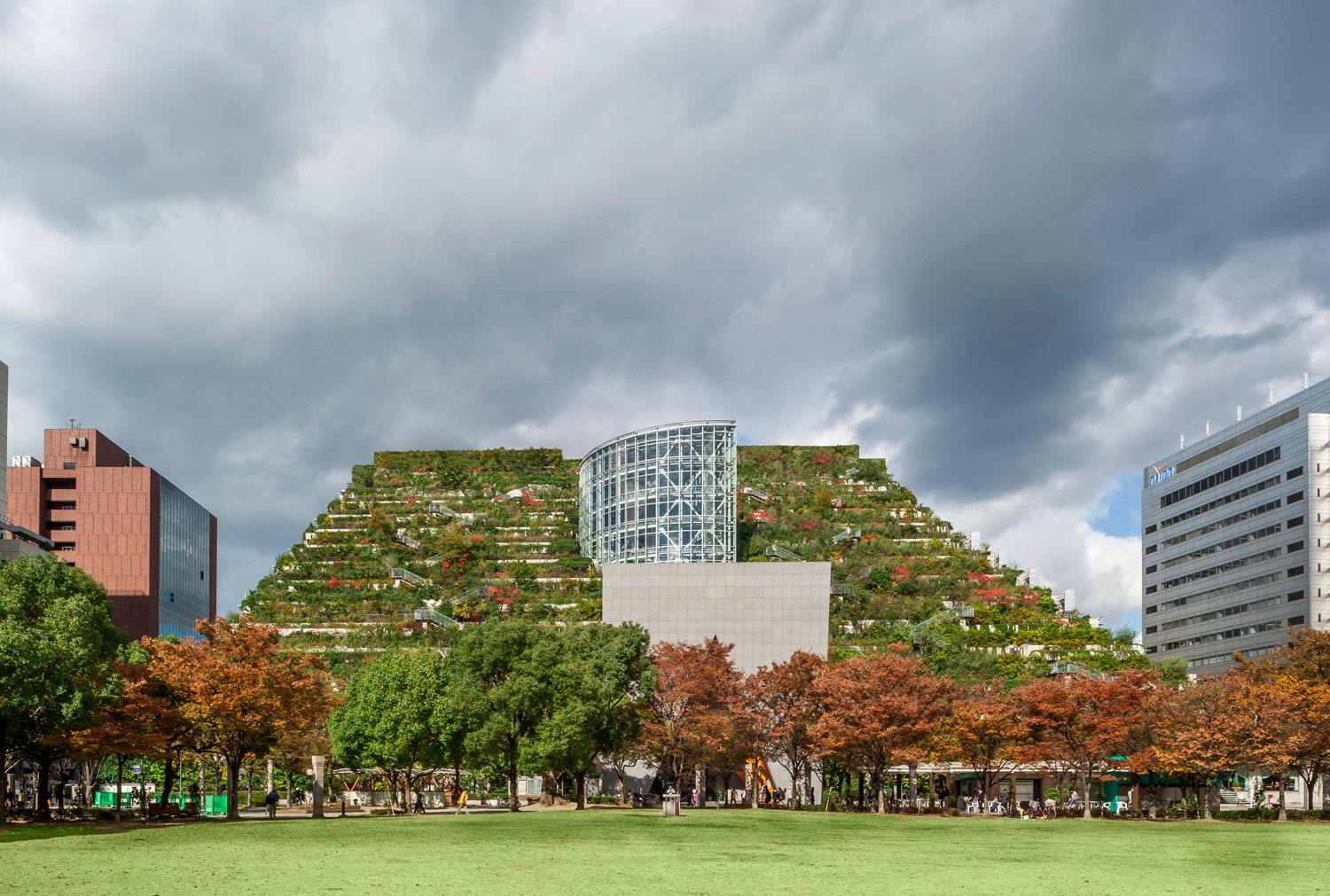
Image: Emilio Ambasz & Associates
An iconic meeting point both for the citizens of Fukuoka and for visitors traveling in Japan, the ACROS Fukuoka Prefectural International Hall represents the building as a mountain, or a magical green pyramid rising to the sky.
Integrating Landscape & Building: Green Living Architecture within the Vegetable Kingdom
Matt Shaw of The New York Times shares how in 2020, the Museum of Modern Art established the Emilio Ambasz Institute for the Joint Study of the Built and the Natural Environment, which supports programming and research about environmentally responsive design. Emilio donated a $10 million contribution from his Legacy Emilio Ambasz Foundation, or LEAf.
Last fall, Rizzoli published “Emilio Ambasz: Curating a New Nature,” a monograph by the Columbia University art and architecture historian Barry Bergdoll that explores his multifaceted career as a designer, architect, and museum curator.
On April 20 at the Betts Auditorium of Princeton University, Emilio Ambasz presented ‘Ecological Architecture’ which was rescheduled from the Fall 2022 Kassler Lecture.
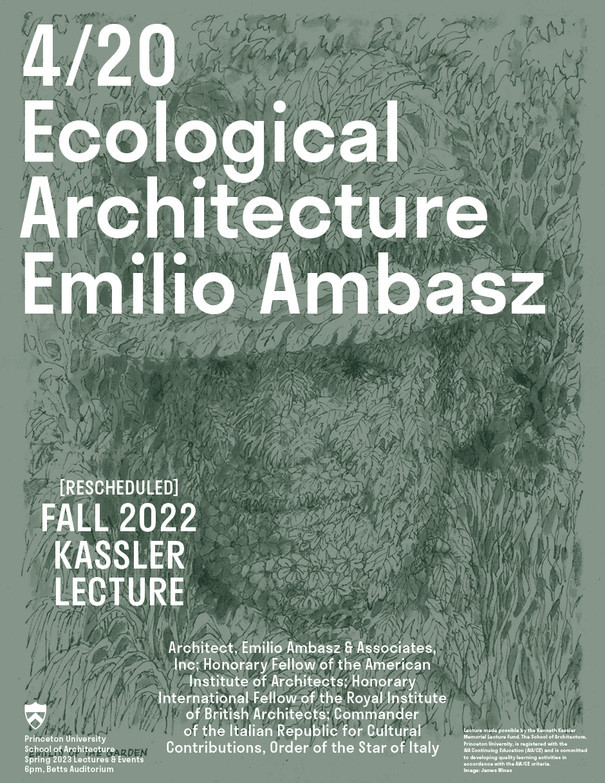
Ambasz has been called a prophet and a poet, and has been a trailblazer of green architecture since the seventies.
“Each building constitutes an intrusion into the vegetation, it challenges nature: we have to conceive an architecture that rises above the intrusion, that stands as an act of reconciliation between nature and buildings. We need to design buildings that are so intermingled with the surrounding landscape that one gets the idea that they are just the same thing.” ~ Emilio Ambasz
Emilio Ambasz has been credited with creating an ecological architecture consciousness, and continues to elevate the concept of architecture with his “Green Over the Gray” philosophy which has been embraced by our living architecture community.
Nature versus architecture? No, nature and architecture together equal a healthy respect for each and the only sustainable way forward to a cooler, cleaner planet and true Green Living Architecture.
Thank you, Emilio Ambasz, for all of your many contributions in the ‘Vegetable Kingdom’ and beyond!
Love the Earth, Plant a Roof (or Wall)!
By Linda S. Velazquez, ASLA, LEED AP, GRP
Greenroofs.com Publisher & Greenroofs & Walls of the World™ Virtual Summits Host
 Greenroofs.comConnecting the Planet + Living Architecture
Greenroofs.comConnecting the Planet + Living Architecture
